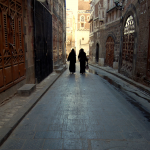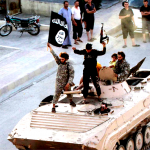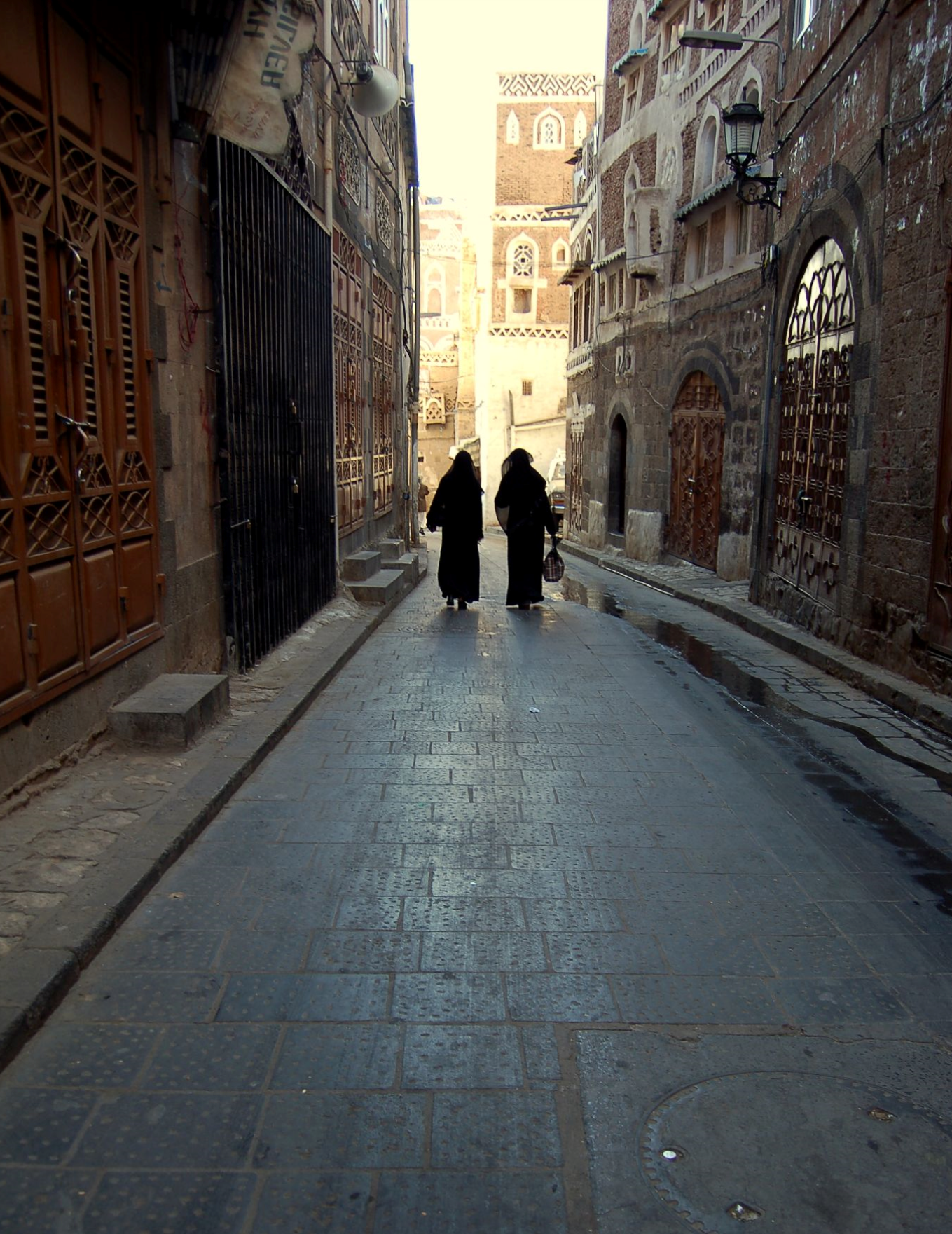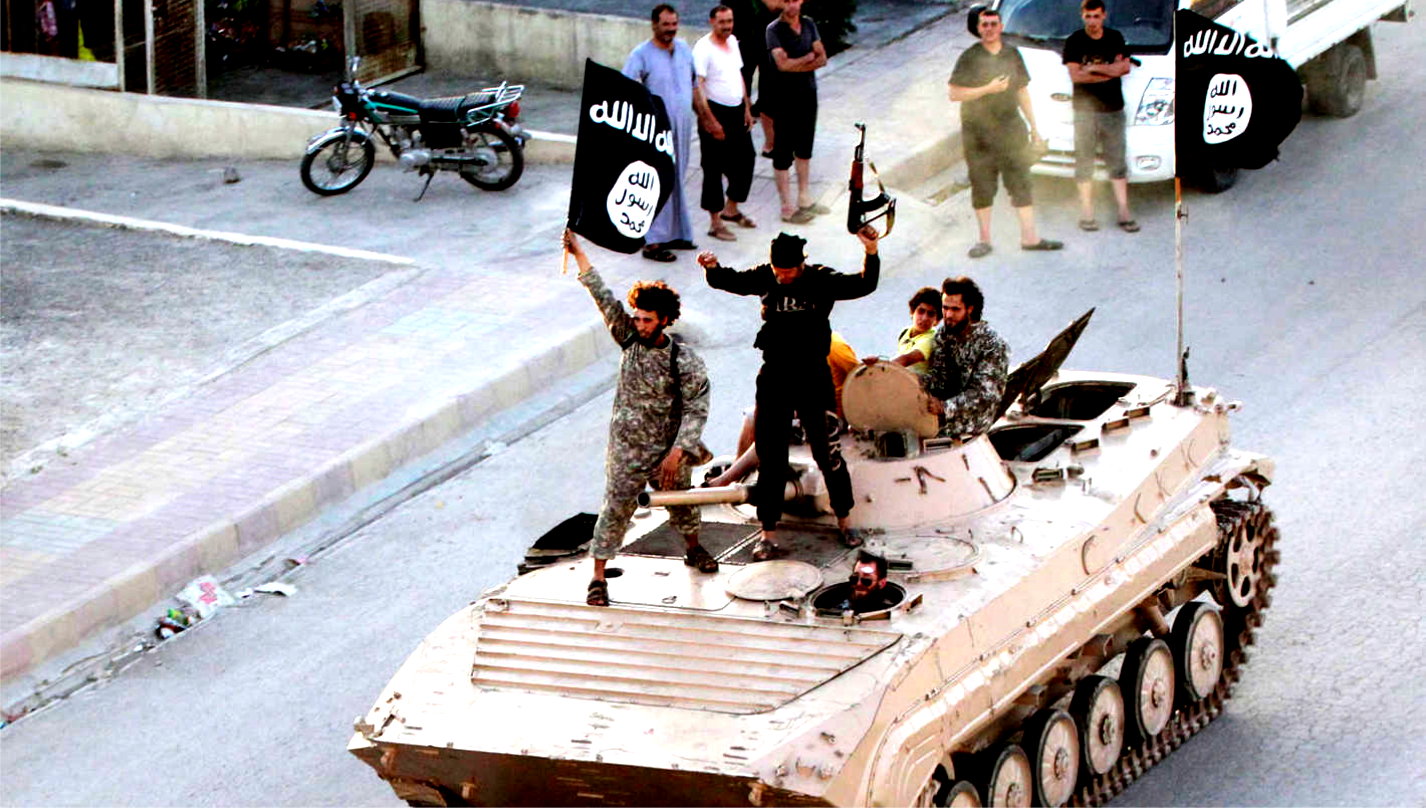Church and state have always been closely aligned in Russia. Now Vladimir Putin is using the Russian Orthodox Church’s societal influence for his own political agenda.
Ask your average American about the union of church and state, of faith and empire, and he or she will likely dismiss the concept as archaic and obsolete, an archaeological relic that is gone for good. Yet in Russia the idea is growing powerful once again. In recent years the Russian government has been strengthening the Russian Orthodox Church (ROC) and using it to strengthen its own influence both over its citizenry as well as Christians in other nations. The US should observe the Russian Orthodox Church in highly Orthodox areas to check for heightened Russian intelligence activity and measure the spread of Russian cultural influence through local polling.
Establishment of a state religion
In July 2016, President Vladimir Putin signed into law a package of legislation that included significant restrictions on political liberties, ostensibly in the name of national security against terrorism. This legislation included clauses which prohibited the creation of any religious organizations or proselytization that is not approved by the government, and required all religious meetings to formally register. These clauses effectively banned house churches.1 This does not affect major institutions such as the Russian Orthodox Church or the Roman Catholic Church.1 Rather, it hampers more decentralized groups, such as Protestants, Mormons, and Jehovah’s Witnesses.1 In addition, legislation from November 2015 forbids religious organizations from receiving outside funding,2 which severely hampers the religious groups that do not already have a significant amount of local support. The new packages of legislation were billed as a counterterrorism measure in light of Russia’s recent conflicts with Islamist groups,1 but the aforementioned effects on peaceful religious minorities and ensuing legal harassments indicate a broader purpose—the preservation of the Russian Orthodox Church as the nation’s dominant religion.
Putin’s recent actions are aimed at a constructing a strong state religion to ward off foreign influence on the citizenry. Putin’s concern with spheres of religious influence have been documented since the beginning of his presidency. His inaugural National Security Concept, an official statement published from time to time to give a vision for how the Russian Federation will conduct its foreign policy, included a promise of “counteraction against the negative influence of foreign religious organizations and missionaries.”3 The document contains two points listing what Putin views as the greatest threats to Russian national security: “adjacent states’ economic, demographic and cultural-religious expansion into Russian territory” and “stepped-up activity by transfrontier organized crime as well as by foreign terrorist organizations.” 3
Are we seeing an old system return?
Although a rising national church may seem an absurd and archaic concept to the increasingly secular West, Russia has no tradition of religious liberty and has had a powerful state church in the past. For centuries Russia had a long-running and tight relationship between church and state until the rise of Soviet state atheism. In 1721, Tsar Peter I effectively made the ROC into a branch of government by creating a Holy Synod that answered to a lay imperial official. The ROC thus served partly as a function of state welfare, charged with organizing almshouses, but also had intelligence responsibilities, such as reporting any talk of sedition heard during confession.4 In the 1880s and 1890s Alexander III built an ever closer relationship with the ROC, embarking on a mass “Russification” campaign in which militant Orthodoxy played a major part.4 This church-state union ended two decades later with the 1917 Bolshevik Revolution against Alexander’s successor, Nicholas II, and with the succeeding Communist campaign to suppress all forms of religion from Russian society (in part a backlash against the association of Orthodoxy with Tsarism). Nevertheless, under Josef Stalin, the ROC was eventually reconciled to the Soviet state during WWII in order to boost morale for the war effort against Nazi invasion, thus giving the USSR a veneer of toleration for Christianity.4 The Moscow Patriarchate continued to be a faithful servant of the Kremlin until the collapse of Communism—KGB archives released in 1991 revealed that the ROC answered directly to the agency, who was filling the priesthood and hierarchy with loyal officers throughout the 1980s.5 After Communism became a discredited ideology and religious activity was liberalized in the new Russian state, Orthodoxy experienced a mass revival amongst the populace.
Eastern Orthodoxy as a microcosm of international conflict
The international implications of Putin’s relationship with the Russian Orthodox Church are incredibly subtle at first glance, but evidence of Russia’s international politicization of the Orthodox faith can be observed in the denomination’s ecclesiastical disputes. The ROC’s relationship with the Russian government could result in a shift of regional loyalties along theological lines, and in some instances, a shift of theological loyalties along regional lines. For example, the international influence of the ROC could potentially gain a lot of strength if it is also able to dominate the Pan-Orthodox Council, the ecclesiastical body guiding Orthodox Christians around the globe. Within Orthodoxy there is presently a major power struggle between the Patriarchate of Moscow, which heads the ROC, and the Ecumenical Patriarchate of Constantinople, which has traditionally been “first among equals” amongst Orthodox bishops since the days of the Byzantine Empire. Although the Ecumenical Patriarchate of Constantinople bears a lot of traditional prestige as the leading office of Orthodoxy (as much as it can have one; the Orthodox Church rejected the Catholic Papacy in favor of regional “patriarchates”), the Russian Orthodox Church carries a significant amount of ecclesiastical weight as a body of 100 million believers, 40 percent of Orthodoxy overall.6 In a major recent example of a regional conflict affecting church politics, the Russian, Serbian, Syrian, Bulgarian, and Georgian Orthodox Churches decided to boycott a meeting of the Pan-Orthodox Council in June, at a time when the Ukraine Parliament had asked the Ecumenical Patriarchate of Constantinople to remove the Ukrainian Orthodox Church from the ROC’s jurisdiction.6
The Orthodox view of politics
One should remain wary of assuming that the increasing association of Orthodoxy and Putinism and resistance to the West is somehow derived from the numerous theological distinctions that Orthodoxy has with Western Christianity. The Orthodox conceptions of sin, atonement, or the Holy Spirit likely have little political impact in the long run, except perhaps to further suspicion of the West as theologically corrupted. The Russian Orthodox identity as a sociopolitical movement is not necessarily rooted in maintaining theological
rigor or even remaining particularly devout; in Russia, those who say they believe in God constitute a smaller majority than those who identify as Orthodox,7 and those who attend church services regularly are still a minority of the population.7
Nevertheless there is still one major aspect of official Orthodox belief that has shaped the political structure of Eastern Europe for centuries, and which is a vital factor in shaping the current relationship of the ROC to the government of the Russian Federation—the doctrine of Symphonia. Symphonia is a concept that arose in the early Byzantine era in which the church and state operate in equal harmony to govern a nation. (Compare this to the medieval Catholic model, in which the state was thought to answer to the Church, the magisterial Protestant models, in which the churches were established as subordinates of the state, or the modernist model of trying to exclude churches from politics altogether.) The Symphonia doctrine has fared better in theory than in practice, of course, given that since the state has both hard and soft power while the church usually has only soft—and because, ever since Tsar Peter I’s church reforms (modeled after the Anglican and Nordic Lutheran systems), the ROC has taken a more subordinate role. Nevertheless, the doctrine of Symphonia is making a resurgence—in 2009 Metropolitan Kirill, current leader of the ROC, met with President Medvedev and preached at length about the virtues of the Symphonia system.8
A Greater Russian buffer zone
An increased harmonization of the ROC with the Russian government would greatly increase Putin’s cultural influence amongst inhabitants of Orthodox regions in Eastern Europe, a phenomenon which may result in a strengthening of alliances between Russia and these nations. Russia has traditionally sought a buffer zone along its western border in order to ward off invasions from Europe.6 During the Cold War, this buffer zone was created using Communist puppet regimes to ensure regional loyalty. With the fall of Communism, Russia has been left bereft of a grand ideological mission with which to promote its hegemonic influence. Putin has found that Orthodoxy is a viable replacement for Communism as something for the people to place their faith in. He has co-opted Orthodoxy as a rallying point to base Russia’s geopolitics on.
Nevertheless the propagandistic value of promoting a vision of Eastern Europe uniting under Orthodoxy against the secular West can backfire. The Ukrainian Orthodox Church, for example, is technically a branch of the ROC and is officially answerable to the Moscow Patriarchate. However, the concept of Russky mir (which literally translates as “Russian world” but carries broader connotations of the Rus, a medieval people group from which both Russians and Ukrainians are descended) has become very politicized in Ukraine and is invoked by both side of the conflict between Russian and Ukrainian nationalists.7
Beyond Russia’s borders
Another major benefit of strengthening the ROC lies in enhancing morale about intervening militarily of behalf of Christians, particularly other Orthodox. A major justification given to the people for Russia’s support of the Assad regime was that his secular rule was necessary to keep Syria’s Christian minority safe from Islamist persecution. Similar events have happened before—the Crimean War of the 1850s was launched under the pretext of protecting Orthodox Christians from Ottoman Muslim aggression.4 This autumn, Russian Foreign Minister Sergey Lavrov will organize a world conference on the persecution of Christians.9 And images of Orthodox priests blessing military equipment for pro-Russian rebels in Ukraine also now feature heavily in official state propaganda.10
Russian Orthodoxy is also engaging in outreach to Christians of other denominations around the world. Russia Today, which effectively serves as a voice of the Russian government, has begun to take an increasingly Christian slant to appeal to Western Christians who may be dissatisfied with secularism. RT’s English outlet has released theological critiques of the de-Christianization of the US and UK, for example.11 But of particular significance is the ROC’s outreach in recent years to the Orthodox diaspora in the West. Eastern Orthodox canon law has been to give each regional church its own local jurisdiction, with the custom being for believers from one Patriarchate to transfer to the authority of the regional Patriarch when moving. But in the last decade the ROC has caused some controversy in expanding its jurisdiction into other territories with the aid of the Russian Foreign Ministry.12
Putin was also instrumental in helping reconstruct the old religion of the Tsarist era by facilitating the merge of the Russian Orthodox Church and the Russian Orthodox Church Outside Russia. The first is the institution which enjoyed some degree of Soviet toleration in exchange for submissive cooperation with the regime, while the second is the church with a competing claim to apostolic legitimacy formed by exiled believers in the post-Bolshevik diaspora.13 The end result of this reconciliation, and ostensible closing of the wounds of Communism, is the placement of 400 parishes outside of Russia under the authority of the Moscow Patriarchate and its ex-KGB clerics. A handful of dissenting churches still remain outside Russia, calling themselves True Orthodoxy and denouncing the ROC as collaborators with the FSB. Churches in Russia who align with to the True Orthodoxy movement have received hostility from the authorities, such as court-ordered transferal of buildings to the ROC.14
Understanding the ramifications
Since the contemporary West has largely secularized, it may be very tempting to casually dismiss the return of Russian Orthodoxy as a major force in world affairs, ascribing the movement merely to ethno-nationalist desire for imperial grandeur. To do so is a severe misunderstanding of the Russian mindset. The US intelligence community must keep careful watch on the activities of the Russian Orthodox Church and understand that its relationship to the Russian government is a lot more symphonic that it appears. To be fair, attempting to quantify cultural shifts can be incredibly difficult, as it is the most abstract aspects of world politics and their effects tend to develop over long periods rather than produce immediate results. Yet understanding general civilizational trends can help guide analysts to know where to start looking. For example, if the US Department of State were to conduct surreptitious polls in Eastern Europe and locate areas that show increasing favorability for the Russian Orthodox Church and its allies in ecclesiastical politics, it may be able to discover patterns which may help forecast future state-sponsored activity from the Russian Federation. In addition, given the records of the KGB planting agents amongst the priesthood, the US intelligence community should expand monitoring of Russian Orthodox parishes for potential state activity. But overall, the first step to being able to counter Russia’s cultural hegemony is to understand what the culture is now found upon—a union of church and state. ■
- Mike Eckel, “Russia’s ‘Yarovaya Law’ Imposes Harsh New Restrictions On Religious Groups,” Radio Free Europe/Radio Liberty, 11 July 2016, http://www.rferl.org/a/russia-yarovaya-law-religious-freedom-restrictions/27852531.html
- “International Religious Freedom Report for 2015,” US Department of State, 2015. http://www.state.gov/j/drl/rls/irf/religiousfreedom/index.htm?year=2015&dlid=256235
- “National Security Concept of the Russian Federation,” Ministry of Foreign Affairs for the Russian Federation, 10 January 2000. http://archive.mid.ru//bdomp/ns-osndoc.nsf/1e5f0de28fe77fdcc32575d
900298676/36aba64ac09f737fc32575d9002bbf31!OpenDocument - Nicholas V. Riasanovsky and Mark D. Steinberg. A History of Russia, Oxford University Press, 2011. p. 230, ps. 385-390, p. 614, p. 334.
- Keith Armes, “Chekists in Cassocks: The Orthodox Church and the KGB,” Demokratizatsiya, Fall 1992. https://www2.gwu.edu/~ieresgwu/assets/docs/demokratizatsiya%20archive/01-04_armes.pdf
- Jacob Shapiro, “The Geopolitics of the Orthodox Church,” Geopolitical Features, 17 June 2016, https://geopoliticalfutures.com/the-geopolitics-of-the-orthodox-church/
- Nicolai Petro, “Russia’s Orthodox Soft Power,” Carnegie Council for Ethics in International Affairs, 23 March 2015, http://www.carnegiecouncil.org/publications/articles_papers_reports/727
- “Participants of the Local Council were present at the reception in the St. George Hall of the Grand Kremlin Palace,” Moscow Patriarchate, 2 February 2009. http://www.patriarchia.ru/db/text/548365.html
- “Russia Is Preparing A Conference On Defense Of Christians In The World This Autumn, Sergey Lavrov Says,” Pravoslavie, 31 July 2016. http://www.pravoslavie.ru/english/95800.htm
- Andrew Higgins, “Evidence Grows of Russian Orthodox Clergy’s Aiding Ukraine Rebels,” New York Times, 6 September 2014, http://www.nytimes.com/2014/09/07/world/europe/evidence-grows-of-russian-orthodox-clergys-aiding-ukraine-rebels.html
- Sam Gerrans, “Scientism: New Religion of the Heresy-Hunters,” Russia Today, 8 February 2016. https://www.rt.com/op-edge/331641-scientism-religion-new-heresy/
- Daniel P. Payne, “Spiritual Security, the Russian Orthodox Church, and the Russian Foreign Ministry: Collaboration or Cooptation?” Journal of Church and State, 9 November 2010, http://www.agoc.org/assets/files/Papers/jcs.csq102.full.pdf
- Robert C. Blitt, “Russia’s ‘Orthodox’ Foreign Policy: The Growing Influence of the Russian Orthodox Church in Shaping Politics Abroad” Journal of International Law, 28 November 2011, https://www.law.upenn.edu/journals/jil/articles/volume33/issue2/BlittBoyd33U.Pa.J.Int’lL.363(2011).pdf
- “International Religious Freedom Report for 2006,” US Department of State, 2006. http://www.state.gov/j/drl/rls/irf/2006/71403.htm
Image credits—
- Church on Spilt Blood © Saint-Petersburg Theological Academy | https://www.flickr.com/photos/spbpda/13145084374




